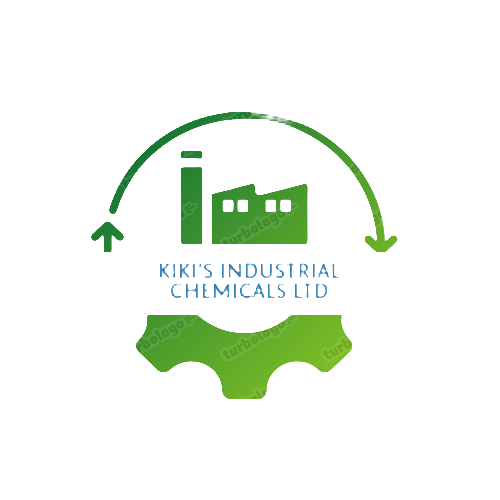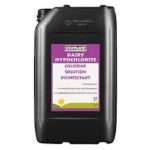DAIRY CHEMICALS IN KENYA
- The dairy industry involves the use of various chemicals for processing, cleaning, and sanitizing equipment. the dairy industry uses various chemicals such as enzymes for processing, cleaning agents for cleaning and sanitizing milking equipment, and synthetic fertilizers, pesticides, and drugs along the dairy production chain. Proper use of these chemicals is crucial fto ensure the quality of milk and other dairy products while minimizing any potential negative impact on human health or the environment.
- KIKI’S INDUSTRIAL CHEMICALS LTD is the leading supplier and distributor of DAIRY CHEMICALS in KENYA, TANZANIA &UGANDA we supply chemicals according to our customers specifications and also offer them expertriate advice to resolve their issues
- Some of the DAIRY CHEMICALS we stock may be classified as follows according to their applications
- •Process Aids
- •Dairy Detergents
- •Dairy Disinfectants
- •Dairy Sanitizers
- •Acid Detergents
1.PROCESS AIDS
Process aids are chemicals used to aid in the processing of dairy products. They can include enzymes, emulsifiers, and stabilizers. Here are some examples of process aids used in the dairy industry:
- Enzymes: Enzymes are used to break down milk proteins and fats, which can improve the texture and flavor of dairy products. Examples of enzymes used in the dairy industry include rennet, which is used to coagulate milk for cheese production, and lactase, which is used to break down lactose in milk for lactose-intolerant individuals.
- Emulsifiers: Emulsifiers are used to stabilize mixtures of water and fat in dairy products such as ice cream and whipped cream. Examples of emulsifiers used in the dairy industry include lecithin and mono- and diglycerides.
- Stabilizers: Stabilizers are used to prevent separation and improve texture in dairy products such as yogurt and pudding. Examples of stabilizers used in the dairy industry include carragee
2.DAIRY DETERGENTS
Dairy detergents are used to clean equipment and surfaces in the dairy industry. They can be alkaline or acid-based, with alkaline detergents being most effective against fatty and proteinaceous soils and acid detergents being effective against mineral deposits. Here are some examples of dairy detergents:
- Alkaline detergents: Alkaline detergents are used to remove fatty and proteinaceous soils from equipment and surfaces in the dairy industry. Examples of alkaline detergents include sodium hydroxide and potassium hydroxide.
- Acid detergents: Acid detergents are used to remove mineral deposits from equipment and surfaces in the dairy industry. They are effective against calcium and magnesium deposits. Examples of acid detergents include nitric acid and phosphoric acid.
ALKALINE DETERGENTS
Alkaline detergents are used to remove fatty and proteinaceous soils from equipment and surfaces in the dairy industry. Examples of alkaline detergents include sodium hydroxide and potassium hydroxide.
ACID DETERGENTS
Acid detergents are used to remove mineral deposits from equipment and surfaces in the dairy industry. They are effective against calcium and magnesium deposits. Here are some examples of acid detergents:
- Nitric acid: Nitric acid is a strong acid that is effective at removing mineral deposits from equipment and surfaces in the dairy industry.
- Phosphoric acid: Phosphoric acid is a weak acid that is often used in combination with other acids for increased effectiveness at removing mineral deposits.
3 .DAIRY DISINFECTANTS
Dairy disinfectants are used to kill bacteria and other microorganisms on equipment and surfaces in the dairy industry. They can include chlorine-based disinfectants, quaternary ammonium compounds, and hydrogen peroxide. Here are some examples of dairy disinfectants:
- Chlorine-based disinfectants: Chlorine-based disinfectants are effective against a wide range of microorganisms, including bacteria, viruses, and fungi. Examples of chlorine-based disinfectants include sodium hypochlorite (bleach) and calcium hypochlorite.
- Quaternary ammonium compounds: Quaternary ammonium compounds are effective against bacteria, but less effective against viruses and fungi. Examples of quaternary ammonium compounds include benzalkonium chloride and dodecylbenzenesulfonic acid.
- Hydrogen peroxide: Hydrogen peroxide is effective against a wide range of microorganisms, including bacteria, viruses, and fungi. It is often used in combination with other disinfectants for increased effectiveness.
DAIRY SANITIZERS
Dairy sanitizers are used to reduce the number of bacteria and other microorganisms on equipment and surfaces in the dairy industry. They can include iodine-based sanitizers, chlorine-based sanitizers, and quaternary ammonium compounds. Here are some examples of dairy sanitizers:
- Iodine-based sanitizers: Iodine-based sanitizers are effective against a wide range of microorganisms, including bacteria, viruses, and fungi. Examples of iodine-based sanitizers include iodophors such as povidone-iodine.
- Chlorine-based sanitizers: Chlorine-based sanitizers are effective against a wide range of microorganisms, including bacteria, viruses, and fungi. Examples of chlorine-based sanitizers include sodium hypochlorite (bleach) and calcium hypochlorite.
- Quaternary ammonium compounds: Quaternary ammonium compounds are effective against bacteria, but less effective against viruses and fungi. Examples of quaternary ammonium compounds include benzalkonium chloride and dodecylbenzenesulfonic acid.






















